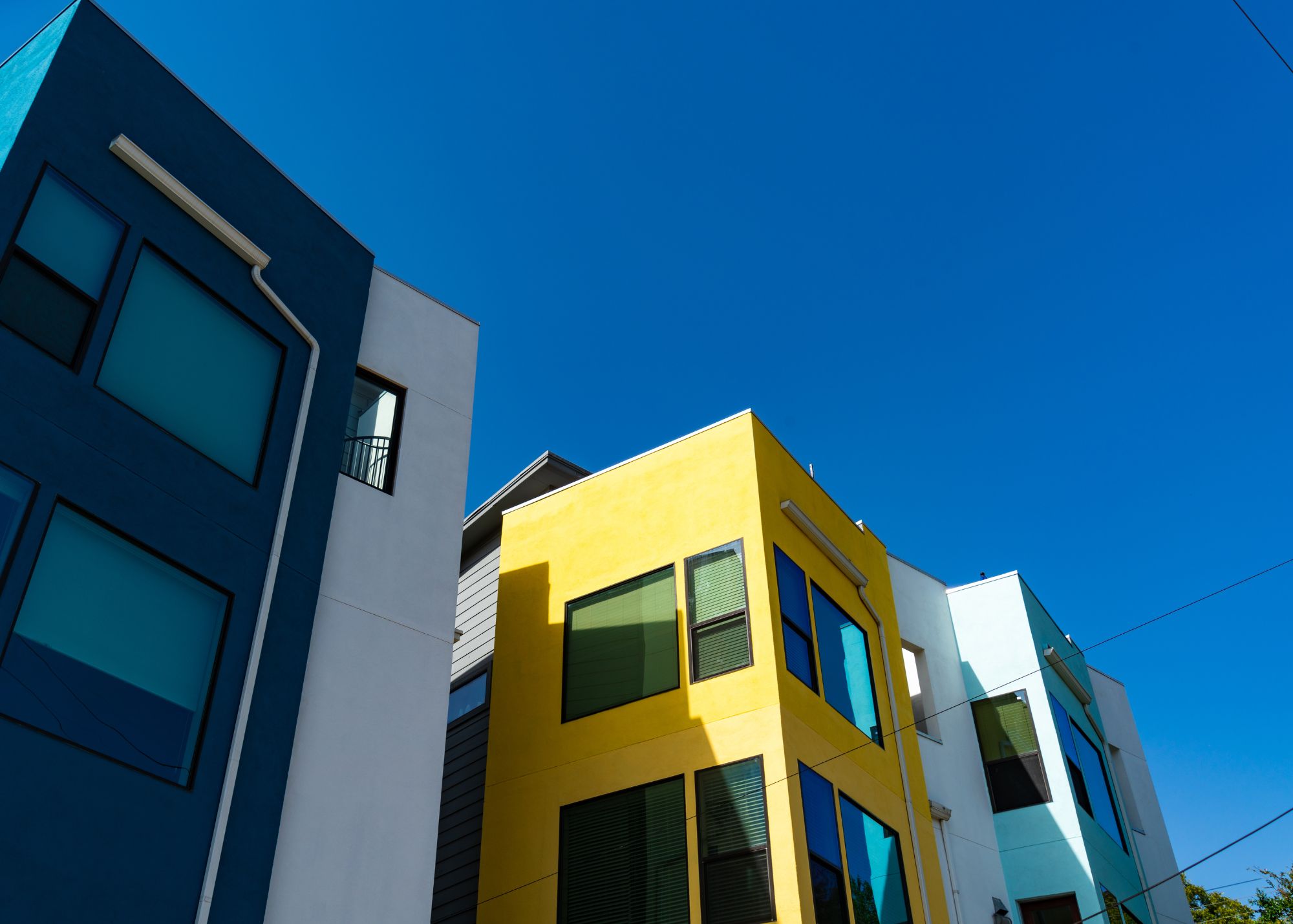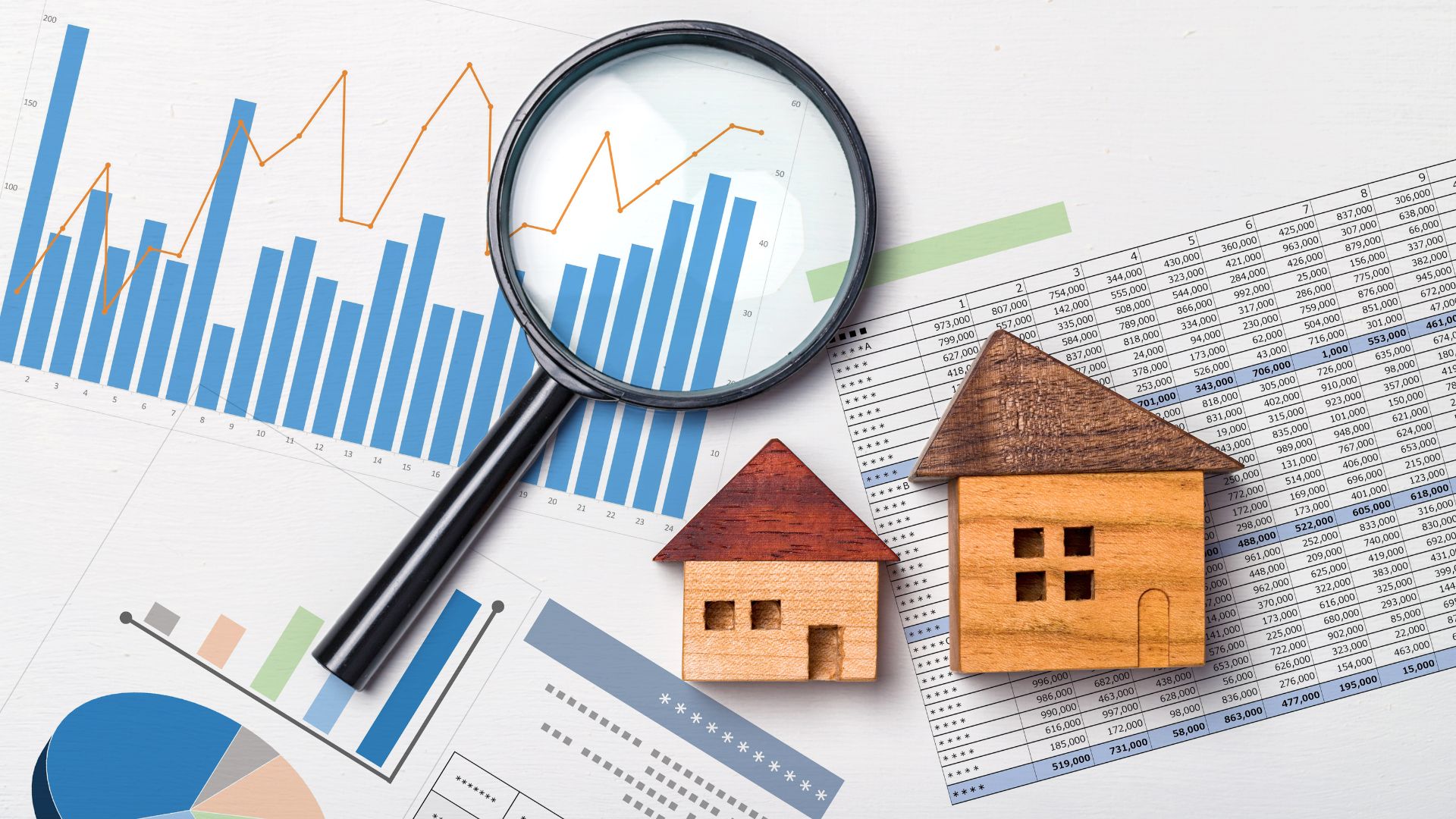A few weeks ago, the Wall Street Journal published an article with a fairly provocative title, “Once America’s Hottest Housing Market, Austin Is Running in Reverse.” That headline clearly got a lot of attention, as we’ve been asked about it–and our thoughts on it–over a dozen times since it came out.
Table of Contents
Remote Work Accelerated Growth in Austin
Austin’s Market Shift
Here, we thought it would be useful (and timely) to lay out our thoughts on what the article said, and didn’t say. They did a good job of highlighting how the pandemic and pandemic response funds from the government led to rents and home prices soaring across the sunbelt. What they didn’t fully acknowledge was the impact that the shift in working remotely had in accelerating the pace of movement to Austin and other growth markets across the Sunbelt.
Reflecting on Austin’s Economic Resilience
As someone who has lived in Austin for 39 years, I kind of chuckle with the overall tone and takeaways the writer points to, as if the good times are just flat over and we’re staring into an exodus of people and jobs that has created a doom loop. Prior to 2003, we had an economy and real estate market that did moderately well; Central Texas was anchored by government (State Capital) and university (The University of Texas, Texas State, Concordia University, Southwestern University and St. Edwards) jobs. We had a smattering of light tech and semiconductor jobs that were seeded or supported by what was happening in Silicon Valley. The history of the US economy and real estate industry is one that is marked with periodic recessions and down cycles. Pre 2003, during those down cycles Austin’s real estate industry and economy tended to recede worse than most other markets in the US. After 2003, Austin’s Economic Development Council (run by local Austin businessmen and leaders) raised its first economic development fund with the aim to diversify and grow our economy. In the last 20 years (through 4 different economic development funds) we’ve been able to do just that.
Today, we are living through another down cycle in the real estate market. This isn’t specific to just Austin, as every market and asset class is reeling from the unprecedented speed and intensity of the Federal Reserve’s interest rate hikes. Multifamily is experiencing some pain in asset values, and to the article’s point also current operations and rental rates–though our pain seems light when compared to what is happening in the office market.
What’s not cyclical is the fact that Austin was and is the most prolific creator of jobs for the last 20 years. Jobs attract population. While leading the nation in job and population growth, we attracted a lot of developers looking to capitalize on those trends–and take advantage of historically low interest rates to build their projects. During the 18-24 months following COVID funds, we saw 20-30% rent growth in our market. Besides the rise in pricing for renters and homeowners and the migration to sunbelt markets like Austin, what followed was developers running to Austin to add new supply. Nothing gets developer and large equity investors attention more than 20% rent growth. For the first time in my lifetime, Austin politicians also saw supply as necessary to make Austin more affordable. The affordability levels we were living at was unsustainable.
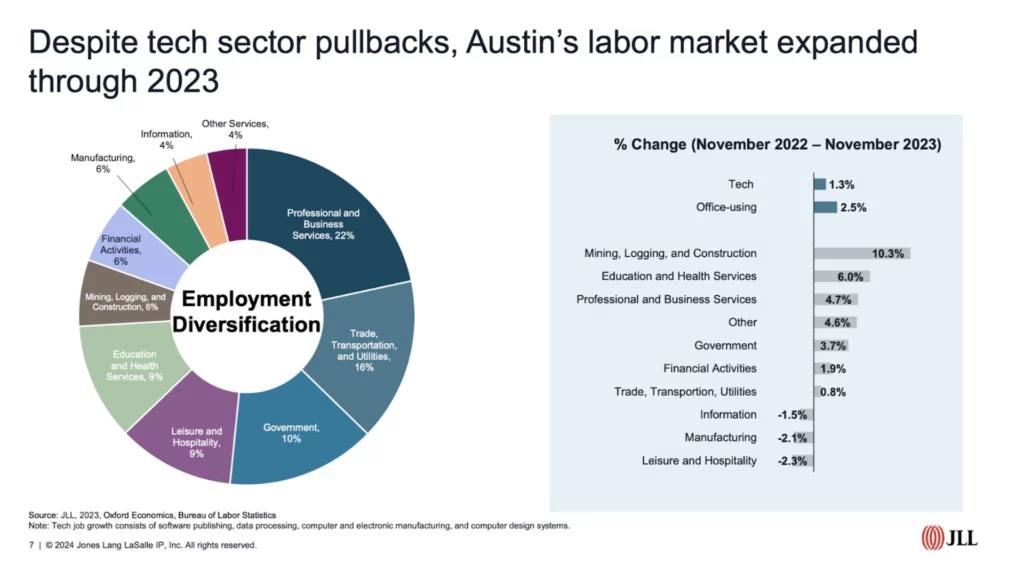
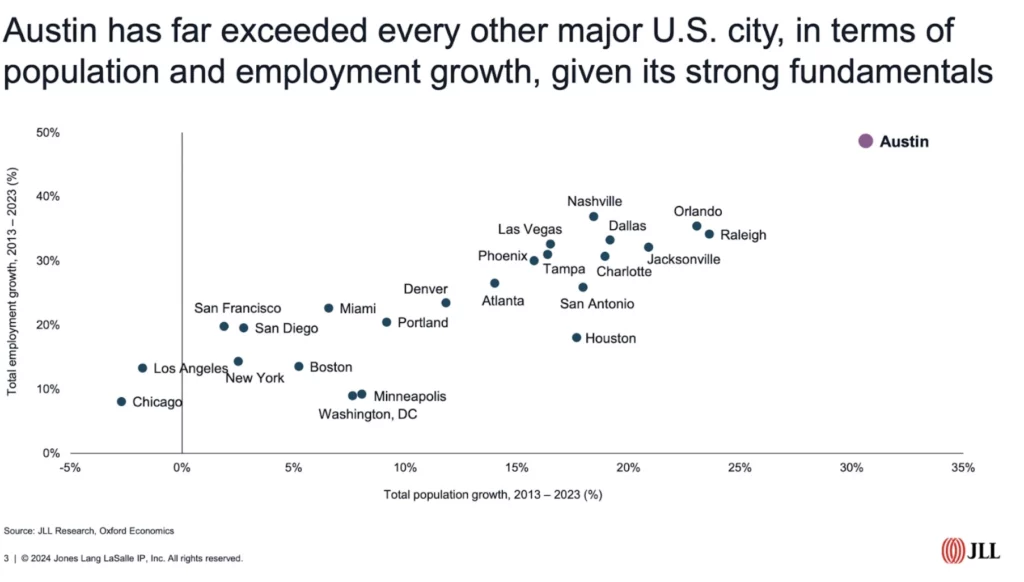
The article mentions that Austin has seen a 7% decline in rental values, which is true and something we are experiencing in our portfolio; the wave of new apartment units coming online is a lot for any market to absorb. Austin politicians think this is a good thing. The WSJ writer cites a Moody’s economist who asserts Austin’s home values are still 35% higher than they should be. I think that is likely overstated, as what we’re seeing on the ground is folks just aren’t selling their homes.
The reality is Austin is experiencing 2 trends all growing cities are 1) home owners who would consider selling are facing the reality that exiting a 2-4% mortgage rate and signing up for a 7-9% new mortgage isn’t really attractive. For that reason, people are staying put. 2) National trends suggest younger Americans desire to own homes less than their parents and prioritize flexibility. That being said, big tech companies have represented the majority of new jobs in urban Austin and the majority of demand for downtown properties. While Austin hasn’t experienced as many job losses from “Big Tech” as Silicon Valley, the new expansion that was set to occur in Austin and occupy space likely won’t occur anytime soon. That coupled with all the new apartment supply that was set to house this new expansion has led to rental values going the wrong direction. The below graph shows how that supply has hit and will continue to hit our market through mid 2025.
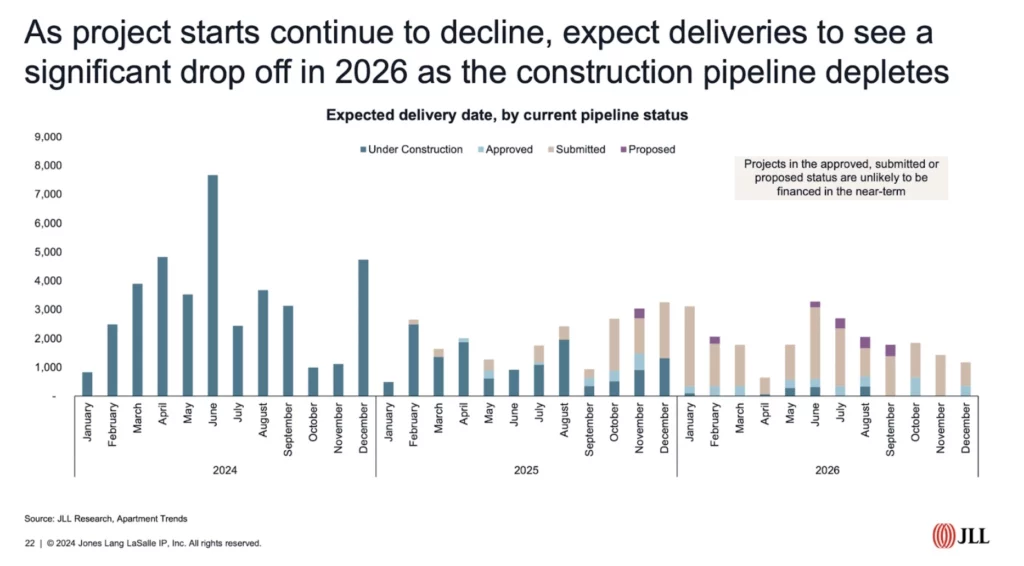
One metric we are tracking is what follows this supply. If I said nothing attracts developers more than 20% rent growth, nothing repels them more than 9% interest rates and negative rent growth. Supply looks to be ready to fall off the map in 2026. So the next question is will we continue to experience the same population growth we have seen in the past? What happens if we do? Will we see more years of double digit rent growth?
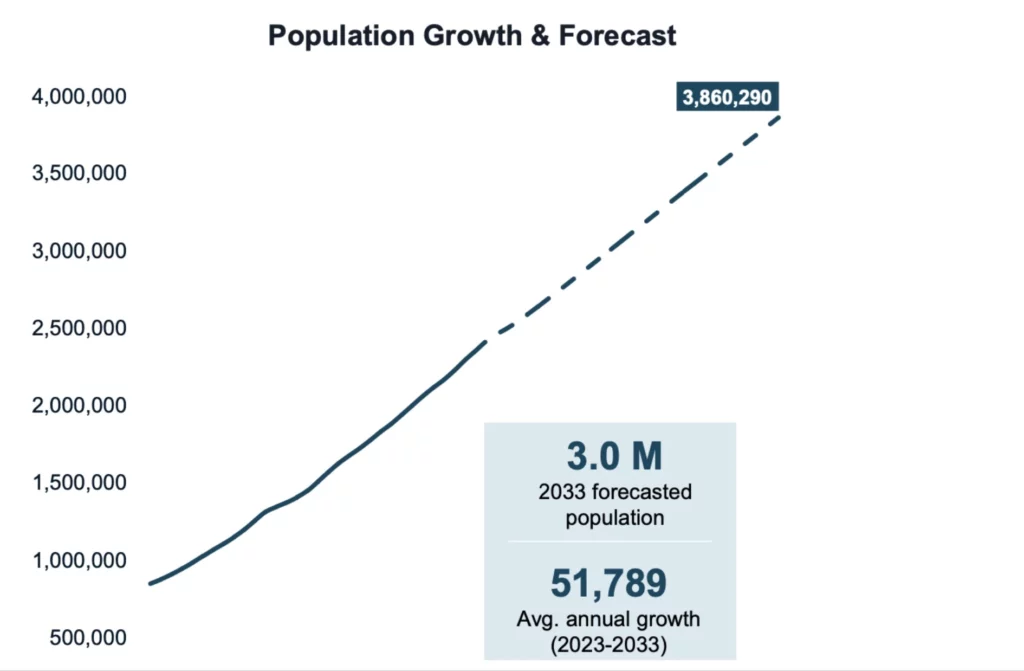
Our former Mayor Will Wynn used to point to a data point in his stump speech that has mostly continued to persist since he was in office. He used to say that Austin/Central Texas has doubled in population over nearly every 20 year period you could reference for the last 200 years. Over that 200 years, we have seen seasons with Republican Governors and Democratic Governors. We have lived through strong economies and weak economies. In that time, our population growth has been the same. Much of what I believe we are feeling now is what it looks like to double a population of nearly 2 million people rather than 350,000 people.
While it is not sustainable to grow at this pace and at these elevated population numbers, Texas demographers (and JLL’s national researchers) believe Austin will continue to see massive population growth.
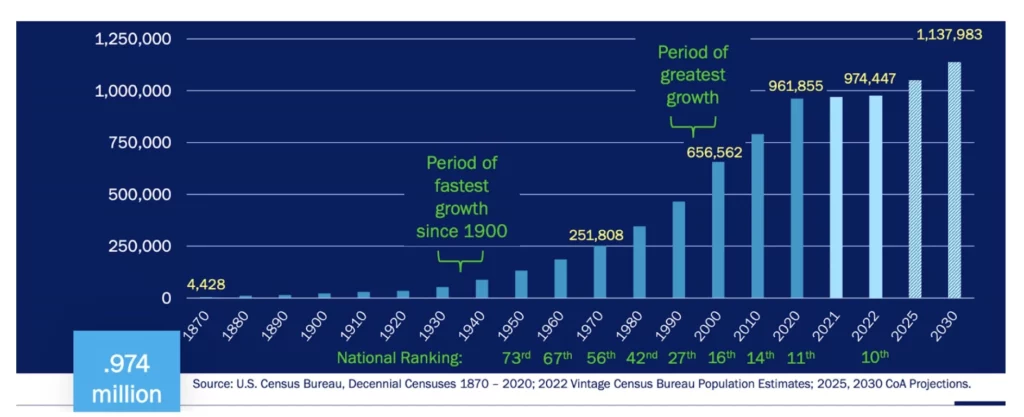
And while it has become very apparent that we can’t win a staring contest with the Federal Reserve, our economy continues to weather the storm much better than it did pre 2003, when we had a less diverse economy. And through all of this, our rent to income ratio continues to be as healthy as any city in the country.
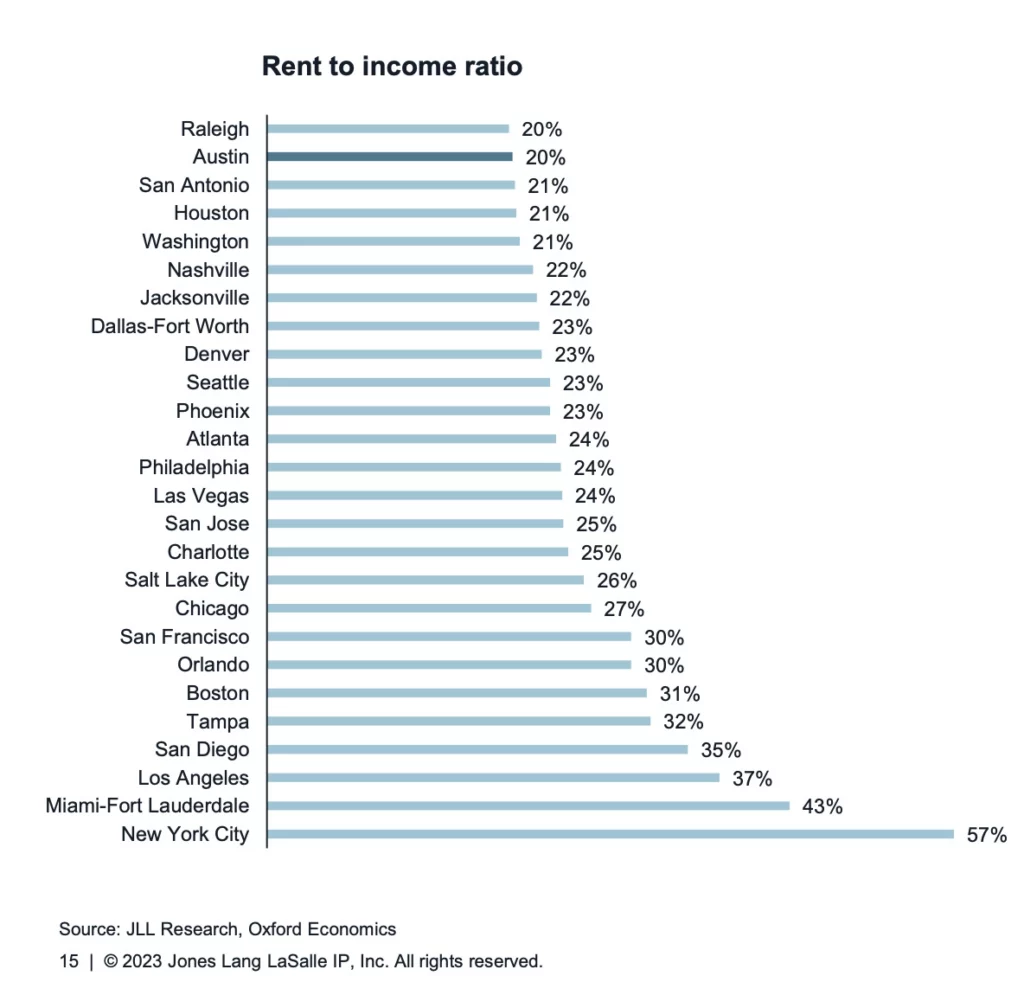
No two economic recessions have been exactly the same. We also don’t exactly know what the next two years will look like economically. What we do know is that we think Austin and the housing sector will weather whatever comes well. The article in the WSJ rightly pointed out some of the challenges facing the market today–and that frankly will continue to be seen for the next 12-18 months. But what we are experiencing is much different than what it used to look like for our city and economy pre 2003. We would much rather these problems than what these recessions used to look like. And we know that through these choppy short-term waters will come some incredible investment opportunities that carry us through the next real estate cycle.
*Source: Credit to JLL for these incredible data points in an Austin Market overview presentation.

Andrew Campbell is a native Austinite and Managing Partner at Wildhorn. He is a real estate entrepreneur who first broke into the business in 2008 as a passive investor. In 2010 he transitioned into active investing and management of a personal portfolio that grew to 76 units across Austin and San Antonio. He earned his stripes building and managing his personal portfolio before founding Wildhorn Capital and focusing on larger multifamily buildings. At Wildhorn, he is focused on Acquisitions and maintaining Investor Relations, utilizing his marketing and communications background to build long-term relationships.






